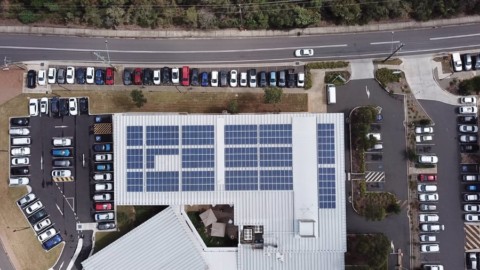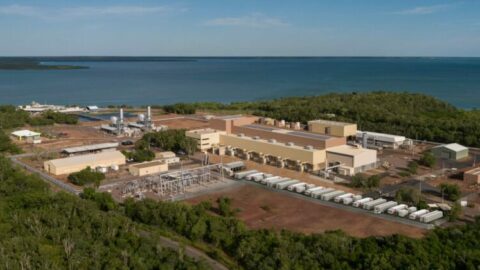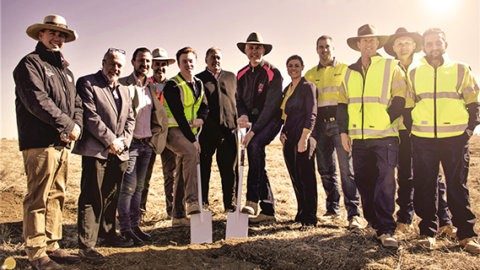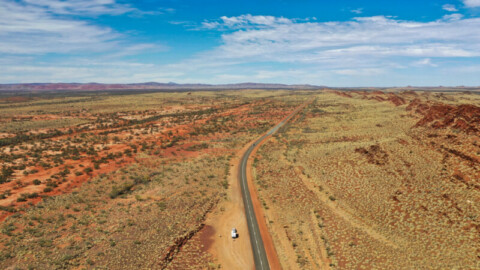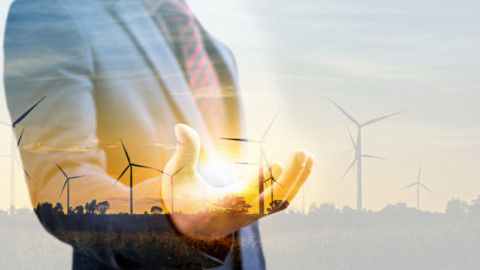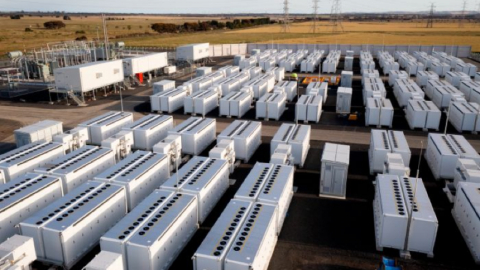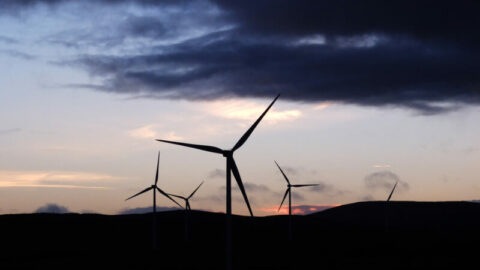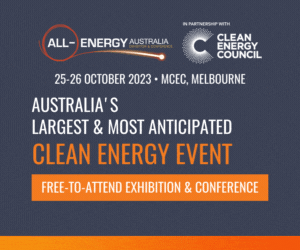By Holly Tancredi, Editor, Energy Magazine
It is an exciting time in the energy sector with new technologies, ways to decarbonise, and innovations to make the day-to-day lives of many Australians easier – with abundant reliable, clean energy on the horizon. However, as technology advances, many First Nation communities in remote and rural Australia are struggling with challenges many in metropolitan areas take for granted, such as basic access to stable, affordable, clean energy. Overcoming these challenges requires reform of existing policies and regulatory schemes, and creates an exciting opportunity for Australia to create new energy systems that ensure everyone, in every region, is supported in the clean energy transition.
As the world grapples with the urgent need to transition our energy systems away from fossil fuels, the adoption of renewables is accelerating, essential to our country’s ongoing sustainability. For many consumers this transition brings with it new decisions and choices around which new energy technologies should be purchased with the aim of electrifying everything – like with rooftop solar or a battery, and even an electric vehicle.
For many First Nation communities however, these choices are largely irrelevant as basic energy needs – access to reliable, affordable power – simply aren’t being met. Reliable power allows us to meet essential human needs, so we can easily cook meals and keep our medicines cold. It also allows us to engage in cultural activities, access employment, and educate our children through powering our computers, phones, heating and air conditioning, keeping our homes safe and comfortable.
Many First Nations residents in remote and regional communities are not having these basic needs met due to unreliable power. Instead, they experience frequent and prolonged electrical disconnections, due to the anomalies of typically diesel-generated, prepaid energy credit systems that power many regional and remote locations across Queensland, Western Australia and the Northern Territory.
First Nations consumers on these prepayment systems are highly susceptible to disconnections. Recent ANU research showed, in contrast to the rest of the country, energy insecurity in the form of disconnections remained unrelentingly high or worsened for more than 10,000 prepay remote-living Indigenous households during the COVID-19 pandemic.
Battling these systemic problems is the First Nations Clean Energy Network, a multifaceted First Nations member-based organisation focused on ensuring First Nations people are front and centre of the energy transition.
Launched in November 2021, following 18 months of consultation with First Nations communities and groups around Australia, the First Nations Clean Energy Network works to ensure First Nations participate in and benefit from Australia’s transition to renewable energy and is based on three pillars: community, industry partnerships and policy reform.
Spanning issues from localised energy access to facilitating First Nations’ ownership of utility-scale projects, the Network has a goal to ensure reliable, clean energy is available for First Nations people, and that First Nations’ participation, informed consent, and benefit-sharing in the energy transition is assured. The First Nations Clean Energy Network is led by a Steering Group of First Nations leaders from around the country who have backgrounds from a multitude of sectors to help inform, educate, and create lasting change.
Energy Magazine spoke with First Nations Clean Energy Network’s Director of Policy and Engagement, Jonathan Kneebone, about what the Network is doing, including its recent work with federal and state and territory governments attempting to re-dress the ways the energy industry and governments engage with First Nations people, groups and communities.
The growing pains of an evolving industry
The First Nations Clean Energy Network’s ambition for a fair, renewable future is grounded in a general principle, shared by Mr Kneebone:
“Regardless of tenure, regardless of what rights there are, our starting point is that all Country is First Nations’ owned and managed.
“People have the right to free, prior and informed consent; meaning the right to decide what projects can happen on their land, and also whether a project should be vetoed if the financial, social or environmental risk is too high.”
Although not mandated under Australian law, Mr Kneebone explained that free prior and informed consent is an essential ingredient for new project development on First Nations land, and one the Federal Government is taking more seriously in its ambition to ensure First Nations people are equal partners in the energy transition.
“First Nations people must be involved in and equipped to participate in decision making and processes as genuine partners – not just another set of stakeholders.”

First Nations Clean Energy Network Symposium, July 2022. Image credit: First Nations Clean Energy Network
Getting clean, affordable, reliable energy
One of the first concerns being tackled by the First Nations Clean Energy Network is access to power.
“People need access to affordable, clean, reliable electricity,” Mr Kneebone said.
“If you can’t keep your food refrigerated and put the lights on for the kids’ homework, then it’s harder to pursue jobs, training, finance and business opportunities.”
Following the push to secure household energy, Mr Kneebone pressed the Network’s drive to support First Nations’ knowledge, power, and capacity, so that “people have the skills, knowledge and ability to be able to access and partner in the project and investment opportunities coming at them”.
“We want to ensure benefit-sharing around renewable energy projects can be implemented for First Nation communities in an appropriate, manageable way.
“Each community and First Nations group is different, with different needs, wants and approaches. There’s not a one-size-fits-all approach.
“There is also an immediate need to support capacity to engage. The energy transition is happening remarkably quickly, and there are many groups needing support and funding to develop the capacity to engage.”
Energy needs to be equitable
Understanding complex differences in how energy is perceived across Australia is important to ensure everyone is brought along in the transition. Accessible energy in the Pilbara region or remote locations of the Northern Territory means something different to what it means in metro areas.
Rather than paying a bill for reliable energy after-the-fact, many remote-living First Nations residents rely on pre-payment systems where power automatically disconnects when there are no remaining funds.
“Remote parts of the Northern Territory, for example, don’t have the consumer protections that consumers in the rest of Australia benefit from,” Mr Kneebone said.
“On prepaid metering systems, as soon as you don’t have credit, the power cuts out.”
Energy disconnections occur with astonishing regularity and have enormous, detrimental impacts. A recent ANU study highlighted 91 per cent of remote houses experienced at least one disconnection across 2018-2019, with over 70 per cent experiencing ten or more.
Other research has averaged these numbers to a disconnection every four days. These disconnections are exacerbated by hazardous weather conditions such as extreme heat, and thus are set to continue with the changing climate.
Exclusionary barriers
Skills shortages in the energy transition are a known industry problem, and promises of projects creating local opportunities are not always reflective of reality for First Nations communities. Mr Kneebone said communities may think – or be told by developers – that they will benefit from large-scale projects, but the benefits are often not applicable or followed through with inclusionary behaviours.
“While a new project may promise local employment, the positions may require knowledge, skills or experience currently lacking in remote areas,” Mr Kneebone said.
“In remote locations, additional thought and effort needs to be given to ensure that work experience and industry-standard qualifications can be gained.”
For the sheer number of jobs set to be part of the energy transition, there is a broad gap between industry expectations and the reality for First Nations inclusion and equity. As a nation, there’s an enormous task ahead to find and skill the workforce required to support the transition to renewable energy.
For First Nations, the Network considers there is a real need to develop a system that allows First Nations people to access opportunities and benefit in the transition.

Darren Kidd with stack of used power cards at Wandangula Outstation as part of Original Power Energy Survey. Image credit: First Nations Clean Energy Network
Practical solutions on a federal scale
Mr Kneebone said the Network recognised early on that new policy, regulatory and market-based approaches and systems would need to be designed to ensure First Nations benefit from and participate in the renewable energy transition.
In August 2022, all Australian Energy Ministers committed to the co-design of a First Nations Clean Energy Strategy as a priority action under the Federal Government’s National Energy Transformation Partnership. An initiative which the Network had asked for prior to the last Federal election, the strategy is an opportunity for First Nations people, groups, communities, and government and industry to work collectively to ensure First Nations drive the energy transition.
Mr Kneebone said the strategy is an opportunity to review laws, regulation and policy, to lift barriers and implement regulatory reform, and to stoke government investment in innovation, technology and infrastructure, so that First Nations people can share in and benefit from the renewable energy revolution.
“The Federal Government has been clear in its intention that the strategy won’t be just another glossy document that sits on people’s shelves.
“It needs to be practical, it needs to build on what’s available. It needs to offer new opportunities and changes, and it needs to be implemented. It’s necessary because we’ve got such a short time frame. The energy transition is accelerating globally and First Nations people are being left behind. This can’t be something that just lingers and doesn’t deliver.”
The Network is assisting in its development through the facilitation of roundtables around the country, bringing together First Nations people with state and territory governments and industry representatives, all working together to reimagine an energy system that benefits, not hinders, First Nations energy participation.
While the strategy will certainly have wide-spread national impact and support long-term developments, the Network is just as eager to see collaborative relationships built, and shorter-term and faster implementations of equitable change throughout the process. At the time of its conversation with Energy Magazine, the First Nations Clean Energy Network was holding its first of many community roundtable discussions.
“We’re holding roundtables around the country, across jurisdictions in various locations with First Nations groups and communities and landowners to really hear what people want to get out of renewable energy,” Mr Kneebone said.
“Our role is to create a space for people to identify the opportunities, barriers and risks affecting active participation in the clean energy transition, and for that to be fed back to the Federal Government in their design of the strategy.”
The Federal Government has said it will have a first draft of the strategy by the end of 2023, with the intention to begin implementation in 2024.
“We are hoping for big ideas and a new way of engagement with First Nations communities,” Mr Kneebone said.
“This is an opportunity that can’t be missed, to ensure First Nations people benefit equitably from – and participate in – this remarkable global energy transition.”
First Nations Clean Energy Network: Best Practice Principles for Clean Energy Projects
1. Engage respectfully
2. Prioritise clear, accessible and accurate information
3. Ensure cultural heritage is preserved and protected
4. Protect country and environment
5. Be a good neighbour
6. Ensure economic benefits are shared
7. Provide social benefits for community
8. Embed land stewardship
9. Ensure cultural competency
10. Implement, monitor and report back
A guiding light for industry
In addition to facilitating roundtables in the development of the First Nations Clean Energy Strategy, the First Nations Clean Energy Network is also maintaining its efforts to serve as an innovation hub, providing industry and community education and resources.
The Network has worked with its experts, communities, and stakeholders to create new industry guidelines. The content includes Best Practice Principles for Clean Energy Projects, designed for proponents, retailers and gentailers on how to best ensure informed consent and active participation with First Nations people.
Mr Kneebone said the ten principles are a guiding light for the industry and can be used when projects are being developed and implemented, and include measures and trackability for how the sector is improving in these areas.
“Although these Principles have been framed to help First Nations communities negotiate with new investors, they should also be followed by clean energy companies themselves and the governments that regulate projects.”
Mr Kneebone said he has seen great ambition from state and federal governments for engagement with First Nations communities.
“I think Australian Governments and industry are realising in 2023, you can’t ignore the rights and interests and the voices of First Nations people – they’re critical and essential if we’re going to achieve the necessary transition to renewable energy as a nation.
“There’s significant areas of land and waters across Australia that are held under Native Title rights and interests, land rights, cultural heritage and other schemes. First Nations people must be at the centre of the energy transition going forward if we are to increase our clean energy ambition in Australia.”
To read more about the First Nations Clean Energy Network visit www.firstnationscleanenergy.org.au
Best Practice Principles for Clean Energy Projects and Best Practice Guidelines: Clean Energy Agreement Making on First Nations Land are available via www.firstnationscleanenergy.org.au/tool_kit




